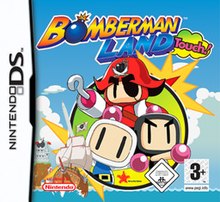아르젠토코노돈
Argentoconodon| 아르젠토코노돈 | |
|---|---|
| 과학적 분류 | |
| 왕국: | 애니멀리아 |
| 문: | 챠다타 |
| 클래스: | 젖꼭지 |
| Clade: | †볼라티코테리니 |
| 속: | †아르젠토코노돈 루지에 등 2007 |
| 종류: | ② A. fariasorum |
| 이항명 | |
| †아르젠토코노돈페리아소럼 루지에 외 2007년 | |
아르젠토코노돈(아르헨티나 원뿔형 이빨이라는 뜻)은 파타고니아 카냐돈 아스팔토 분지의 카냐돈 아스팔토 층에서 멸종한 포유류의 속이다.처음 설명했을 때, 그것은 원시적인 특징과 파생된 특징을 가진 하나의 어금니형 이빨에서만 알려져 있었다.이 치아는 현재 고생물박물관에 보관되어 있으며, 표본번호는 MPEF-PV [2]1877이었다.2011년에 기술된 새로운 자료에 따르면 Argentoconodon은 Triconodontidae과에서 [3]Ichthyoconodon, Jugator, Volaticotherium과 유사하며, Triconolestes도 [4]있을 수 있다.
공중 이동
볼라티코테륨과 두개골 후 여러 유사점들은 아르젠토코노돈이 활공할 수 있었다는 것을 암시한다.특히, 대퇴골은 보다 완전한 친척과 동일한 형태와 비율을 공유하며 고도로 전문화되어 있고 대퇴골 머리 없이 회전 이동에는 덜 유능하지만 다리를 뻗고 비행 [3]스트레스에 저항하는 데 더 유용하다.
아르젠토코노돈의 시공간적 분포는 희귀한 쥐라기 초기 에우트리코노돈일 뿐만 아니라 이 그룹의 유일한 두 남미 구성원 중 하나이며, 다른 하나는 약간 젊은 콘도로돈이다; 카냐돈 아스팔토 층의 다른 포유동물들은 다양한 오스트랄로스페니데스페니단이고, 다른 추정치이다.여기.[5]이것은 [6]미래에 관심을 가질 만한 것으로 여겨져 왔다.
다이어트
대부분의 아트리코노돈과 마찬가지로 아르젠토코노돈은 동물성 식성이었을 가능성이 높으며 어금니는 전단에도 적응했습니다.중생대 포유동물의 식이요법을 자세히 설명한 연구에서 그것은 육식성 [7]종에 속한다.이것은 식충 분류군이 아닌 육식동물 사이의 플롯에 있는 중생대 포유동물 하악골에 대한 또 다른 연구에 의해 더욱 입증된다.[8]
레퍼런스
- ^ Fantasia, A.; Föllmi, K. B.; Adatte, T.; Spangenberg, J. E.; Schoene, B.; Barker, R. T.; Scasso, R. A. (2021). "Late Toarcian continental palaeoenvironmental conditions: An example from the Canadon Asfalto Formation in southern Argentina". Gondwana Research. 89 (1): 47–65. doi:10.1016/j.gr.2020.10.001. S2CID 225120452. Retrieved 27 August 2021.
- ^ Rougier, Guillermo W.; Garrido, Alberto; Gaetano, Leandro; Puerta, Pablo; Corbitt, Cynthia; Novacek, Michael J. (2007). "First Jurassic triconodont from South America". American Museum Novitates (3580): 1–17. doi:10.1206/0003-0082(2007)3580[1:FJTFSA]2.0.CO;2. hdl:2246/5873. S2CID 85676529.
- ^ a b Gaetano, Leandro C.; Rougier, Guillermo W. (July 2011). "New materials of Argentoconodon fariasorum (Mammaliaformes, Triconodontidae) from the Jurassic of Argentina and its bearing on triconodont phylogeny". Journal of Vertebrate Paleontology. 31 (4): 829–843. doi:10.1080/02724634.2011.589877. S2CID 85069761.
- ^ Averianov, A. O.; Lopatin, A. V. (February 2011). "Phylogeny of triconodonts and symmetrodonts and the origin of extant mammals". Doklady Biological Sciences. 436 (1): 32–35. doi:10.1134/S0012496611010042. PMID 21374009. S2CID 10324906. ProQuest 854984818.
- ^ Gaetano, Leandro C.; Rougier, Guillermo W. (December 2012). "First Amphilestid from South America: A Molariform from the Jurassic Cañadón Asfalto Formation, Patagonia, Argentina". Journal of Mammalian Evolution. 19 (4): 235–248. doi:10.1007/s10914-012-9194-1. S2CID 16988665.
- ^ Butler, Percy M.; Sigogneau-Russell, Denise (2016). "Diversity of triconodonts in the Middle Jurassic of Great Britain" (PDF). Palaeontologia Polonica. 67: 35–65.
- ^ Grossnickle, David M.; Polly, P. David (2013-11-22). "Mammal disparity decreases during the Cretaceous angiosperm radiation". Proceedings of the Royal Society B: Biological Sciences. 280 (1771): 20132110. doi:10.1098/rspb.2013.2110. PMC 3790494. PMID 24089340.
- ^ Morales-García, Nuria Melisa; Gill, Pamela G.; Janis, Christine M.; Rayfield, Emily J. (2021-02-23). "Jaw shape and mechanical advantage are indicative of diet in Mesozoic mammals". Communications Biology. 4 (1): 242. doi:10.1038/s42003-021-01757-3. PMC 7902851. PMID 33623117.








